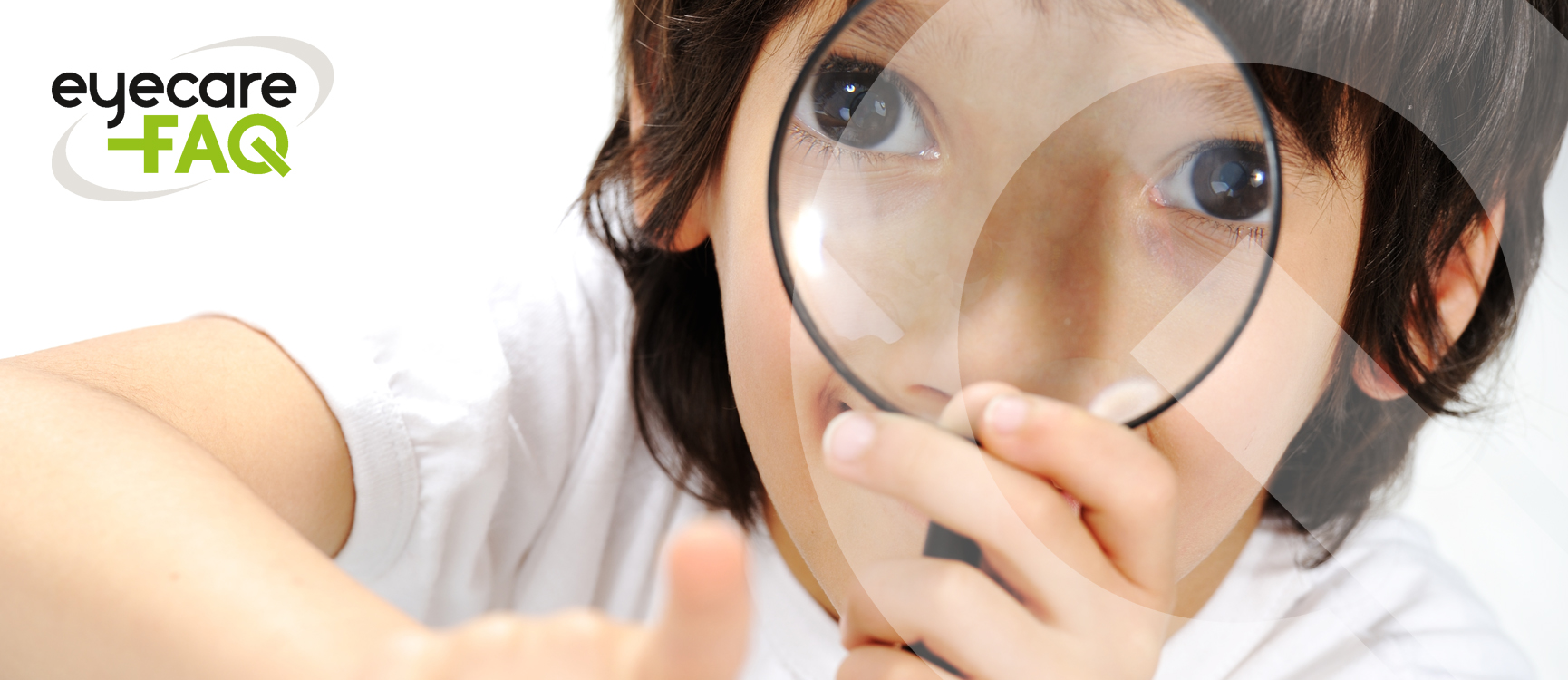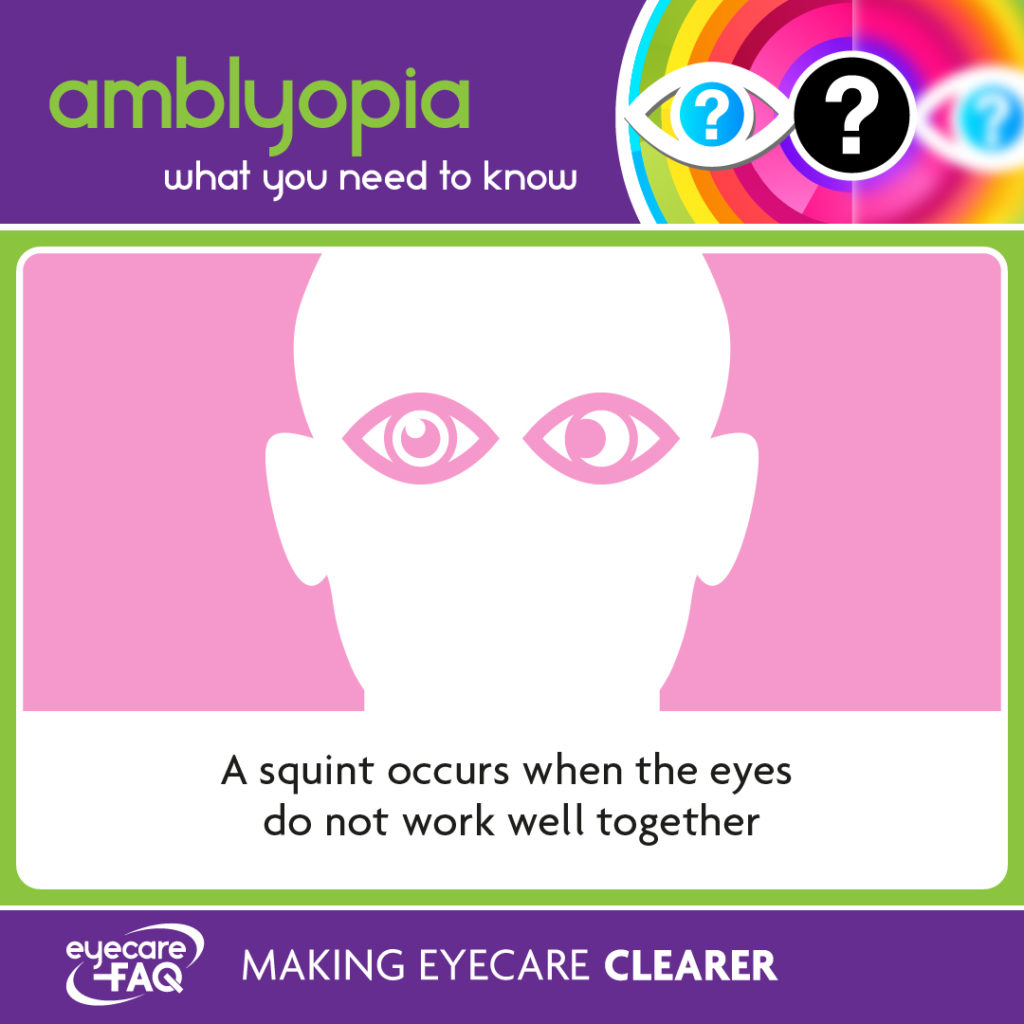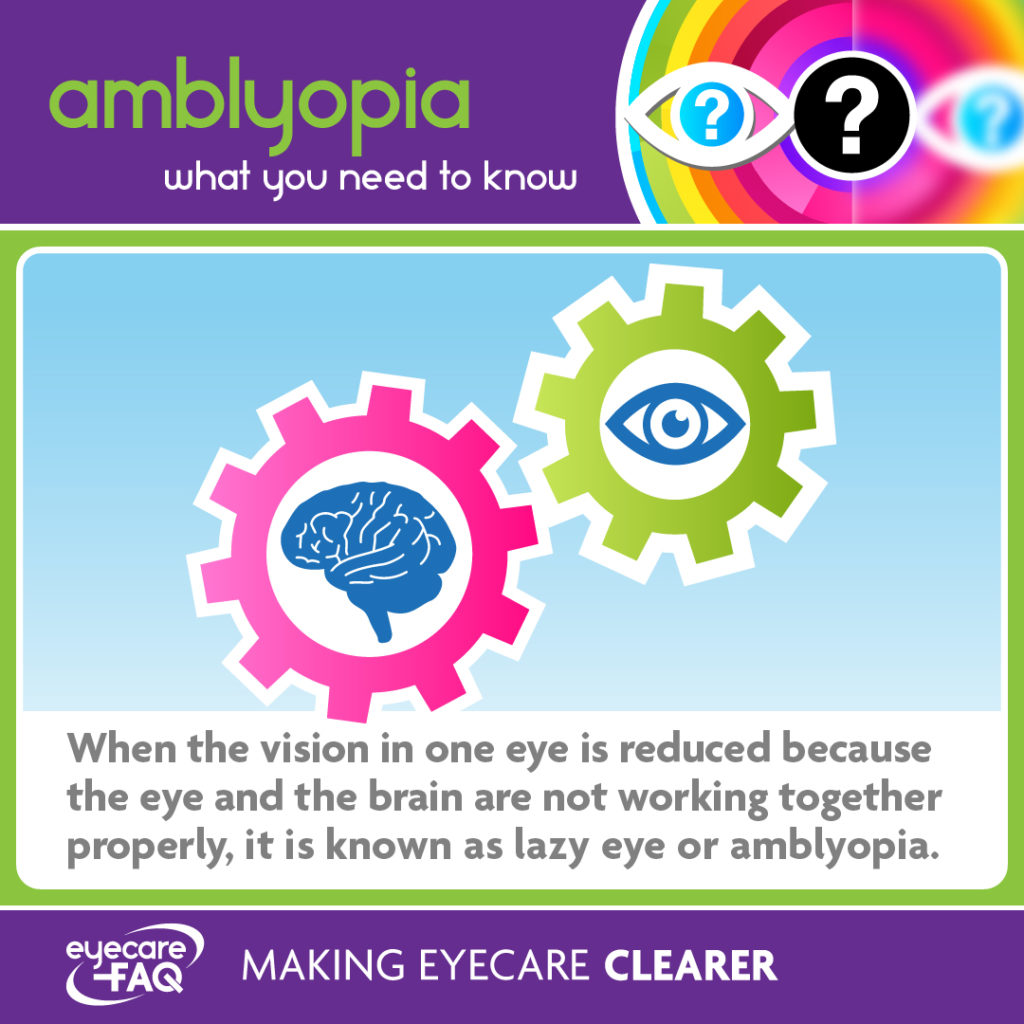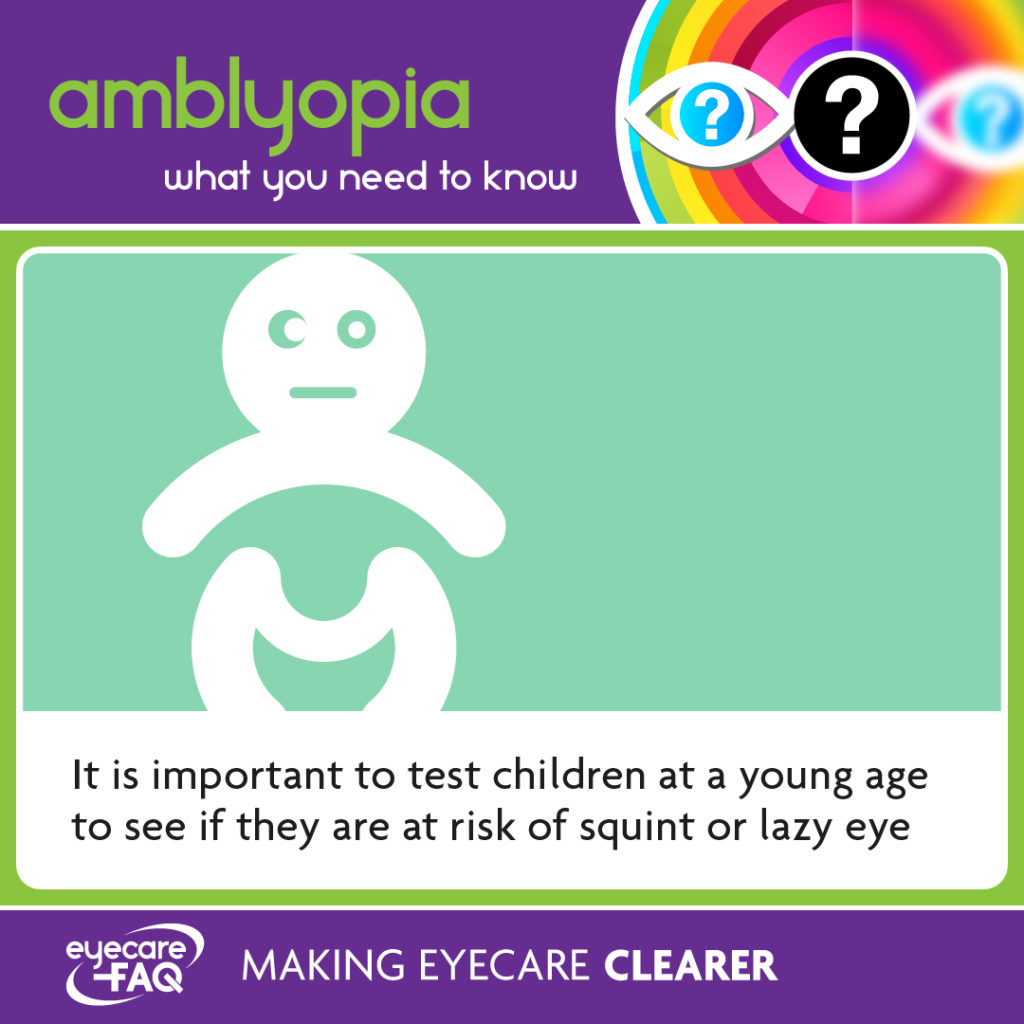Why do we have two eyes?
There are lots of advantages to having two eyes. It gives you a wider field of vision, so you can see predators sneaking up alongside you, or in modern days this might help you see a car speeding towards you. Two eyes also gives you binocular vision, which gives you a way to judge how far something is away from you. You can use binocular vision to see how objects move in relation to each other, allowing you to know which one is closer. You also have a spare eye if one is damaged!
How do my two eyes work together?
Each eye receives a separate image, and generally the two images are similar but not identical. The image is picked up by nerve cells in the retina, which contains the special “photoreceptor” cells that convert light into electrical signals. The electrical signals travel from the retina to the brain through the optic nerve, a bundle of about one million nerve fibres. The brain brings together both images.
What is a squint?
A squint occurs when the eyes do not work well together, and consequently one eye may appear to drift out or in, especially when your child is tired. It may occur because one eye is more long sighted or shortsighted. A squint can also occur when both eyes are long sighted and the muscles in the eyes have to work extra hard to focus. These muscles also pull the eyes together, so children with a high level of longsightedness are at higher risk of squint.
A squint can lead to one eye working less well than the other, known as lazy eye or amblyopia. It is important to test children at a young age to see if they are at risk of squint or lazy eye because treatment is more effective when started early. Children don’t have to be able to read to have a sight test. Ask for recommendations for an optician who is good with toddlers.
What is a lazy eye?
If there is a big difference between your child’s eyes, one eye may do more work than the other. Over time, the less-used eye can become lazy, which is also known as amblyopia. This can be treated, but treatment is more effective the sooner it is started. Because of this, it is important to test children at a young age to see if they are at risk of squint or lazy eye. Children don’t have to be able to read to have a sight test.
Ask for recommendations for an optician who is good with toddlers.
What is amblyopia?
If there is a big difference between your child’s eyes, one eye may do more work than the other. Over time, the less-used eye can become lazy, which is also known as amblyopia. This can be treated, but treatment is more effective the sooner it is started. Because of this, it is important to test children at a young age to see if they are at risk of squint or lazy eye.
How are squint and lazy eye detected?
Squint and lazy eye can be detected during a routine eye test. The optometrist will check each eye, and will also test how they work together. It is important to get your child’s eyes checked as a toddler. Detecting a lazy eye at this stage means that treatment will be as effective as possible as the eye is still developing.
If the optician thinks your child has a squint or lazy eye, they may be prescribed spectacles, which can help straighten a squint. Your child may also be referred to the hospital to see an orthoptist. They may suggest ‘patching’; covering the better eye to encourage the lazy eye to work. They may prescribe exercises to help your child’s eyes work together. Some children may also be offered surgery to improve the way the eyes co-ordinate.
How is a lazy eye (amblyopia) treated?
If your child has a lazy eye, the optometrist and optician will first ensure that they have any spectacles that they need. It is important that your child wears their specs because this gives both eyes a chance to work well. Some children find their lazy eye improves simply by wearing their specs. For many children, though, they will also need some help to train the lazy eye to work again. You may be referred to see an orthoptist, a specialist in binocular vision. Orthoptic treatment may involve patching: covering the good eye to encourage the lazy one to work. Children can struggle with this at first. Give them a treat such as doing their favourite activity while the patch is on, but remember their vision my not be great at first.
Eye drops can also be used to blur the vision in one eye and encourage the child to use the other one. You will be advised to build up how long your child wears the patch for, and you will need to attend follow up appointments. Fortunately, with the right specs and treatment, young children who have a lazy eye can see their vision improve significantly.
How is a squint treated?
If the optometrist picks up that your child has a lazy eye, they will first ensure that they have any spectacles that they need. It is important that your child wears their specs because this gives both eyes a chance to work well. Some children find their squint eye improves simply by wearing their specs. Other children may have a lazy eye as well and need help to train it to work again. You may be referred to see an orthoptist, a specialist in binocular vision. Some children will benefit from surgery to improve the appearance of their eyes and help them to work together. Whatever the treatment¸ you will need to attend follow up appointments as your child grows to ensure their eyes continue to develop well.
I’m worried my child has a squint. What should I do?
It is not uncommon to wonder if your child’s eyes are working together properly. Babies, toddlers and young children can all have their eyes tested, and early detection means treatment of any problems is more likely to be successful. Ask friends for recommendations for a local optical practice that is good with children. Book in for an eye exam and explain your concerns. Picked up early, squint and lazy eye can be treated so your child’s vision develops properly.




